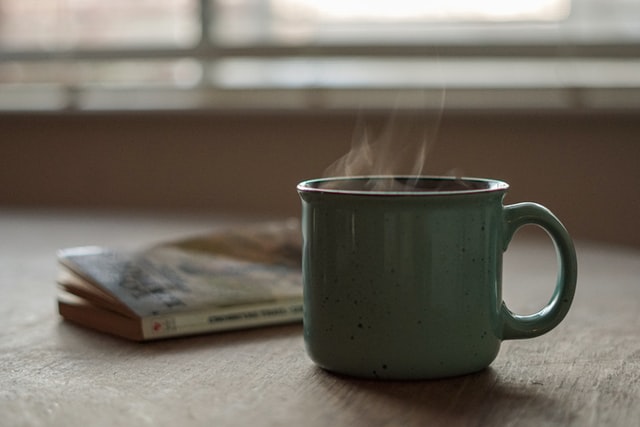
Hey Friends,
I read a lovely newsletter (essay? post?) by Ava Huang about five months ago, titled Routines, Rituals, and Meaning, and was convinced enough to give it a go. I started performing my morning ritual every morning before work.
The ritual would go something like this: I would take out my grinder and pour peeled & overnight soaked almonds into the grinder, then add a bit of water, honey, and boooommm my daily driver for the day is ready. Additionally, I make sure that I drink it in my own space while meditating on my thoughts. After the five minutes, I would sip my said favourite beverage (sometimes coffee), thinking about nothing in particular, with the tacit understanding that when the mug will become empty I had to get up and get to work.
For you it could be like aeropress 250ml of black, hot gold or a finely filtered black coffee into your favourite mug. . It can be anything like a black coffee, Green tea or Herbal drink etc. Something which offers you an apt setting to speak with your inner self for a while, before you jump into the worldly wagon of chaos & deadlines. Yes, I know how crazy that sounds.
One minor caveat, which I discovered after about a week of following it: I stooped taking my electronic devices out to the balcony. And so long as I’ve kept to that, the ritual has worked like a charm.
It’s been some time since I started doing my soaked-peeled almond drink mixed with pure honey ritual. I’ve got good enough results from the practice that I’m comfortable recommending ritual-making to anyone who finds themselves doing self-directed work. I’m not entirely sure why it works. All I know is that it does.
My one-line summary: a routine becomes a ritual when you imbue it with meaning. It’s weird; I recommend not thinking too hard about it. The goal is to keep the ritual sacred — whatever sacred means to you. But for some reason, these rituals do work.
I would open up with my observations that writers and artists and other creative folks out there often have different or sometimes weird looking practices around their work. Let me give you an example of Murakami, for instance:
“I get up at 4:00 am and work for five to six hours. In the afternoon, I run for 10km or swim for 1500m (or do both), then I read a bit and listen to some music. I go to bed at 9:00 pm. I keep to this routine every day without variation. The repetition itself becomes the important thing; it’s a form of mesmerism. I mesmerize myself to reach a deeper state of mind. But to hold to such repetition for so long — six months to a year — requires a good amount of mental and physical strength. In that sense, writing a long novel is like survival training. Physical strength is as necessary as artistic sensitivity.”
And another one by artist Arlene Shechet:
What is your day like? How much do you sleep, and what is your work schedule?
I like to get eight hours of sleep. I’m too cranky if I get less than seven. And I am incredibly disciplined with my work schedule. I start in the morning, and I end at night. I’m very good at just committing to the day.
My schedule — it’s anything I have to do to make the work. And I don’t work for a show; I’m making stuff all of the time. I don’t like being too goal oriented, and I don’t believe in having a “body of work,” either. I just believe in art, in showing a generous offering from the studio.
How many hours of creative work do you think you do in a day?
It’s all the time. It doesn’t start and stop. It’s a river or a lake, and I swim in it.
And Ava Huang herself:
As I was writing this S. pointed out that routines tend to be most powerful for creative work, because in other jobs some kind of structure tends to be forced on you (i.e. if you work at a tech company). However, he said that even within those settings, he finds that the people who most good at what they do tend to have specific and weird routines: they’re obsessive about working out at a certain time of day for instance, or drink a disturbing amount of coffee and don’t eat until 8 PM. This isn’t surprising to me: people who are good at creating systems tend to be good at reaching goals.
But the main thing about rituals is the following paragraph, and it hit me like a sack of books thrown off a balcony:
So, what’s the difference between a routine and a ritual? I define routines as casual habitual actions that you repeat day to day. They become rituals when you imbue them with meaning (emphasis added). For example, something like a five mile run every morning can either be something you do quite thoughtlessly to keep yourself in good health, or it can be something sacred that helps you hypnotize yourself into doing the work you need to do.
My soaked-peeled almond drink/ sometimes coffee ritual is for when I really want to be with my own self and want to do some reflecting. Not doing it when I can’t do the work is how I keep it sacred.
If you find yourself doing creative, self-directed projects, I’d recommend giving this a try. Just don’t think too hard about why it does or doesn’t work; shut down the rational bits of your mind. The point is to be ridiculous. You’ll want to imbue your ritual with the meaning necessary or ‘appease the muse’ or whatever silly thing you need to do to convince yourself that what you’re doing gives you permission to do the work. And then, of course, hopefully, you go and do it.
Do follow the ‘JOE’s Life Skills Lab‘ and get yourself enrolled in my E-Mail Newsletter “SUNDAY RETAZOS” sent exclusively to my subscribers with weekly updates on ‘Mindful Productivity, life lessons and interesting articles I discover during the Week‘. I AM SURE YOU DO NOT LIKE TO MISS OUT ON THIS.
Get in touch… — JOE’s LIFE SKILLS LAB/Joe Sehrawat
Take Care


